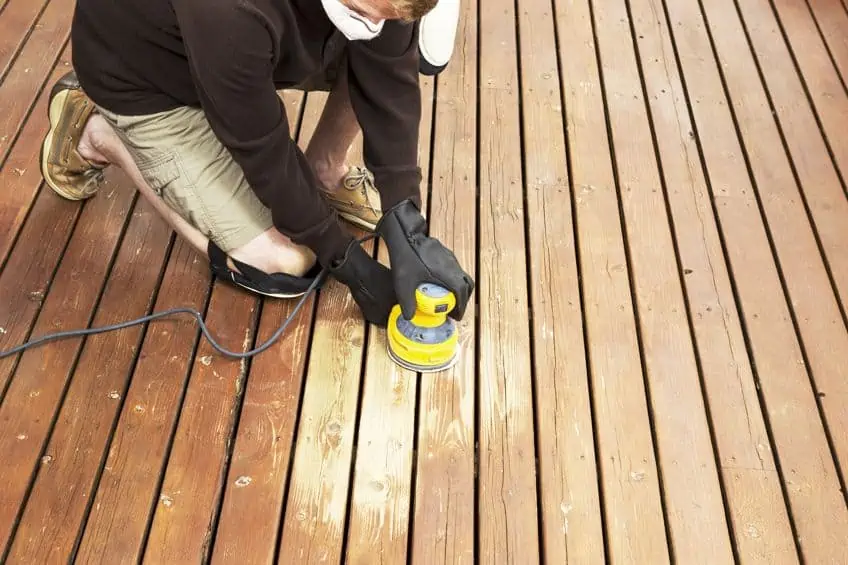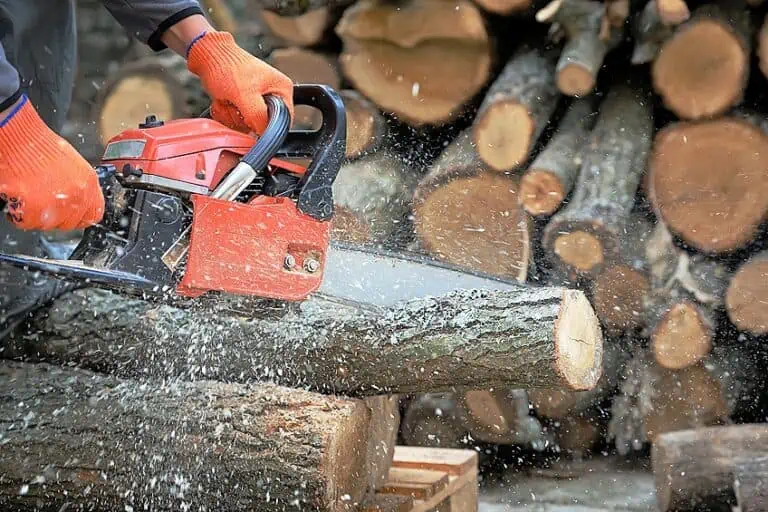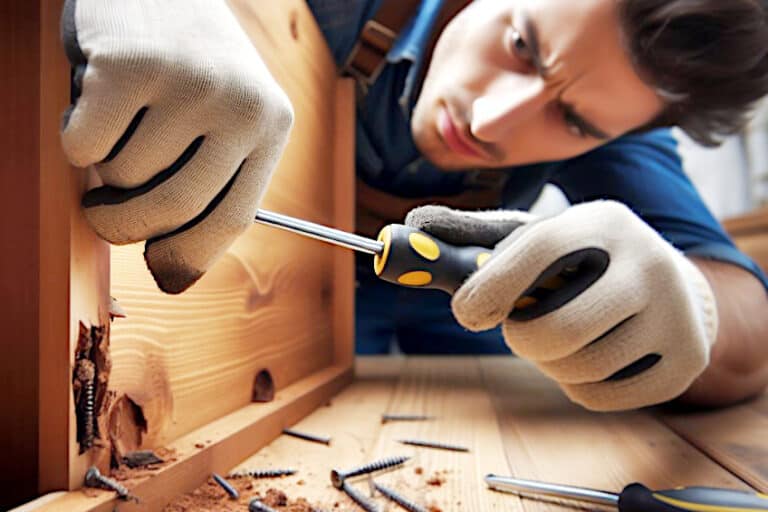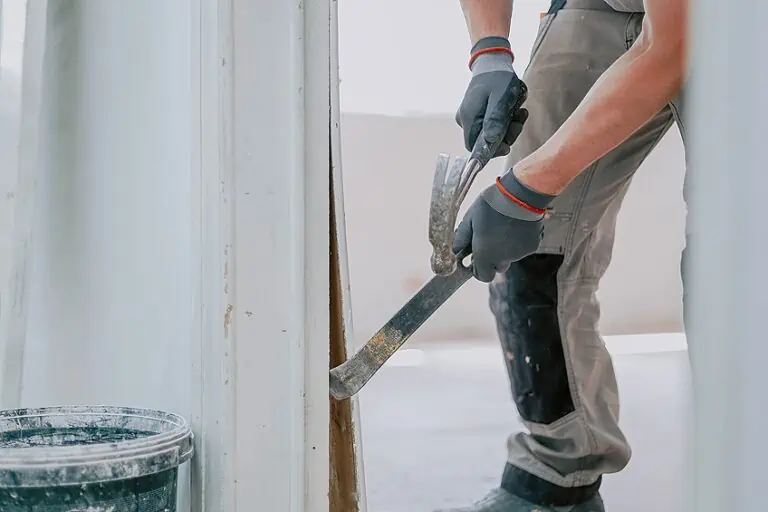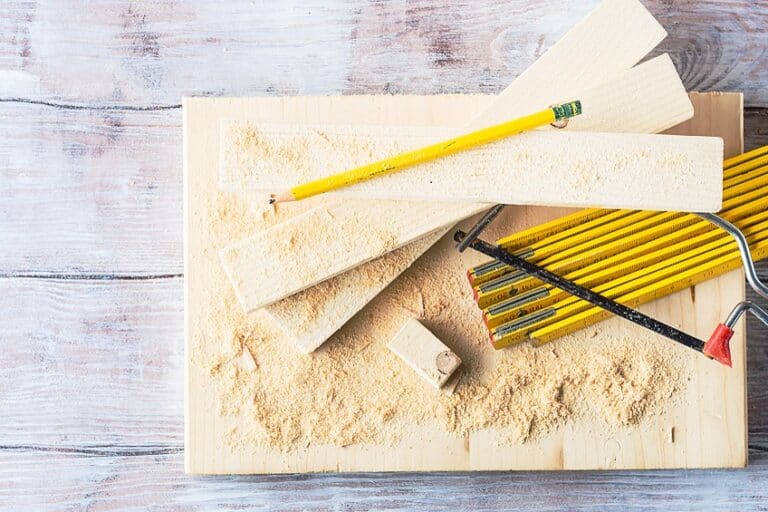How to Sand a Deck – Our Guide to the Best Way to Sand a Deck
Some things in life are simply unavoidable. The human experience involves tons of repetition, maintenance, repair, replacement, and change, which takes up a large portion of our lives. These activities, including self-maintenance, do help improve the quality of our lives and are ultimately necessary for both our survival and peace of mind. Something as simple as sanding your outdoor deck not only improves your quality of life but can actually breathe some life back into a space that has been ravaged by the elements. Although, a lot can be said about the tools we use to execute all this upkeep, what is the best sander for deck maintenance? Let’s have a look at some of them and see why deck maintenance is important and what the best way to go about it is.
How to Sand a Deck
You now know how to select a unit as well as the strengths and weaknesses of each type of sander, but do you know how to sand a deck? In case you don’t, we have prepared a step-by-step guide on how to prepare and sand your deck for the upcoming season. Before you get started, ensure that you equip yourself with the relevant personal protective gear such as gloves, a face mask, and eye protection.
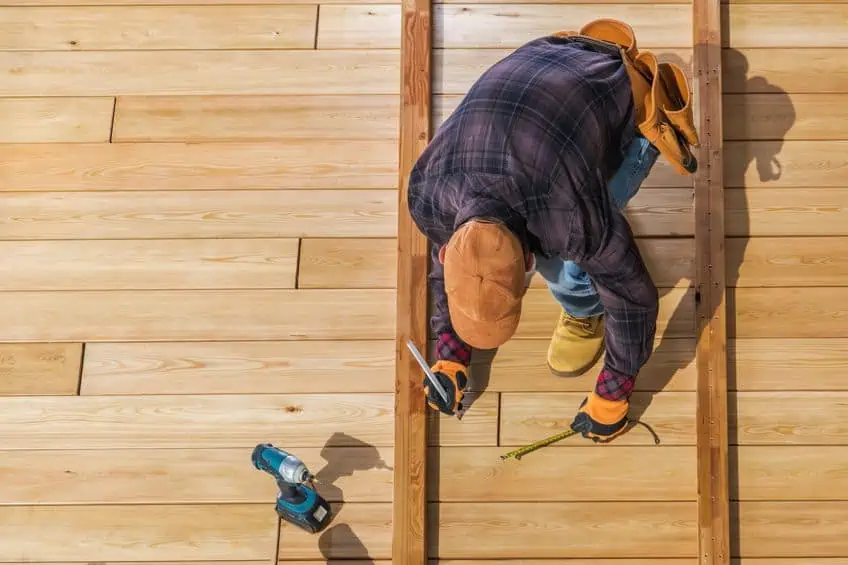
Clean Your Deck
Cleaning your deck is an important part of the sanding process. Cleaning your deck will ensure that any dirt or grime that has accumulated since it has last been treated has been removed. What’s more is that since your deck is outdoors things like moss, bird droppings, mold, and other contaminants could have built upon the surface. If you were to sand your deck with these things still present it could gunk up your sanders pads which is a bit of a nuisance especially if our project is a time-sensitive one.
We recommend cleaning your deck with a power washer but ensure that you are using the correct pressure setting and distance do so, if you fail to do so it could result in your surface being both saturated with water and lifting under the pressure.
Knowing what type of wood your deck is made of will help considerably as softwood will require a greater distance and a lower pressure setting to clean, whereas hardwood might require a bit more effort to clean. Once your deck has been cleaned, ensure that you allow it to dry completely for 24 hours and inspect it for raised surfaces and/or nails heads before continuing to the next step in the process.
Prepare/Repair Your Surface
Decks take on quite a bit of damage throughout the course of their lives, and while sanding and resurfacing them is definitely one part of the maintenance process there is one more thing that you will need to do before you begin the sanding process. Since you have already cleaned the surface of the deck you will need to fill in any gaps and correct any loose nails on the surface of the board. Why you may ask? Well, gaps in the grain of the wood or missing chunks in any knots on the surface will cause some problems if you don’t fill them up, this could cause your sander to stick fast and ruin both the sanding pad and the motor of your unit.
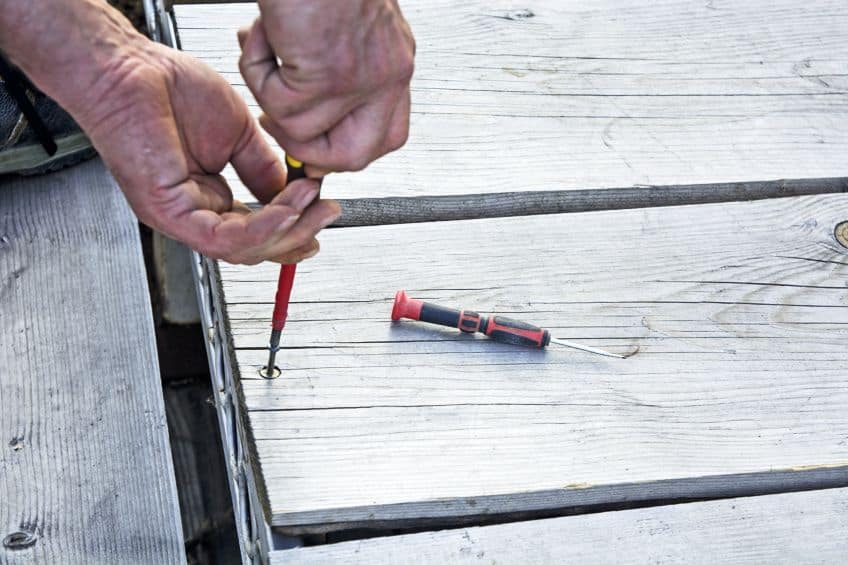
Other than this, exposed wood fiber can be a magnet for rot, mold, termites, and other contaminants that could ruin your deck, so filling them will undoubtedly save you a lot of time, effort, and money down the line. Correcting this problem won’t take more than about a half-hour or so; simply nail down any nails that have been raised and fill any recesses with normal or epoxy wood fillerand allow it to dry for the manufacturer’s recommended time period before continuing to the next step in the process.
Sand Your Deck
Now to really get your hands dirty. Once you are confident that your surfaces have been adequately prepared it’s time to get to sanding, ensure that you have selected the appropriate grit sanding paper/pad for the type of wood you have. There are various options for which sanding paper to use for deck resurfacing, and this can differ depending on which type of wood your deck is made, but generally, we recommend you use rough 60-to 80-grit sandpaper to start with.
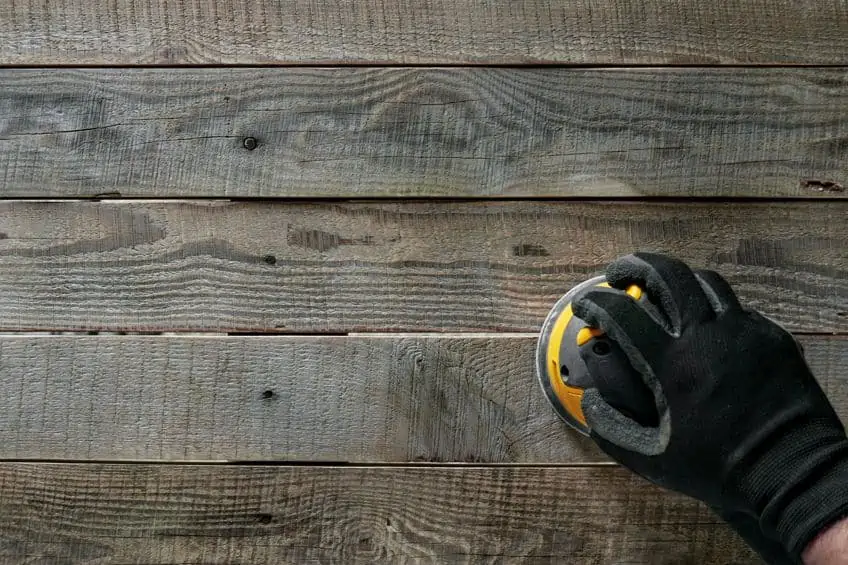
Pick a spot to start at and sand down the length of each board. Remember that taking your time and monitoring the amount of pressure you use is important to achieve a consistent finish over the entire surface. Using a belt sander with minimum pressure is the simplest way to go about this, especially if your deck is made of hardwood, although an orbital sander with sufficient power will achieve the same result, it’s all about feeling your way through it and developing your own technique.
Once you have completed sanding about a quarter of the deck’s surface, inspect it and ensure that you have an even finish throughout, if not simply give the areas that aren’t flush a once-over with your sander. Once you have completed the surface of the deck, it’s time to get started on the railings. Remember that these can be made out of a different type of wood depending on when the deck was made, so we recommend using a finer grit sanding paper for this potion. Additionally, if you have a variable speed sander try using a lower speed setting.
Railings can be tricky to sand, so using your sander to cover the larger exposed surfaces and then sanding down smaller nooks or hard-to-reach areas is the ideal approach.
Once you are satisfied with the railings, we recommend sanding the edges of the deck last. Why? Well, sanding edges with a sander can be extremely tricky, and doing them manually is often best, and since this requires significantly more elbow grease (and time) it’s arguably best to do them last.
Get out your sanding paper and take your time on the edges of the board, as the very next thing that catches one’s eye after the deck surface is the edge of the deck, this detail can ruin the overall aesthetic of the board if done poorly so attention to detail is key. Once you are satisfied with your handy work, ensure that you use a vacuum to clear off any chips and dust on the overall deck.
Which Types of Sanders Work Best for Deck Maintenance?
What is the best sander for deck maintenance? Truthfully, there are only two types of sanders that will work for this particular application, and unfortunately, they don’t come very cheap. The good news is that they will undoubtedly make your life a lot easier and ensure not only that your deck is sanded beautifully, but in a timely manner too.
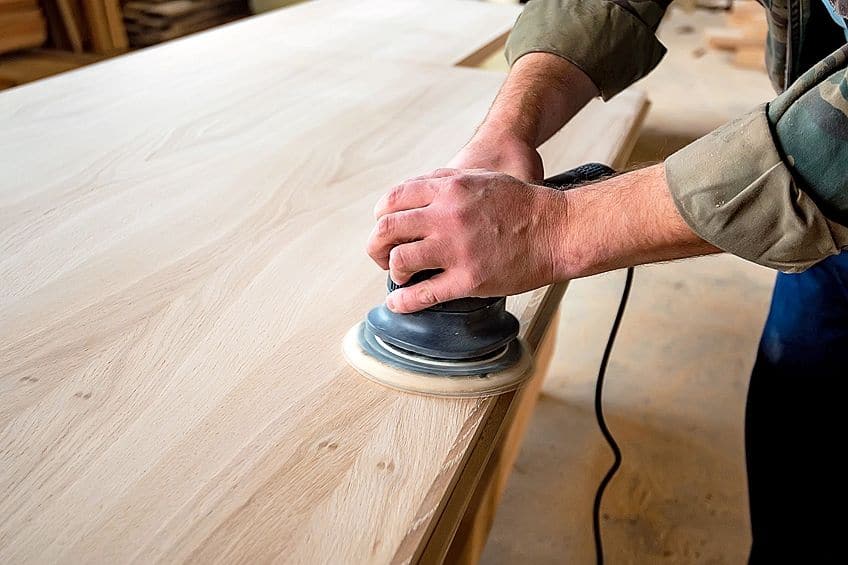
The two types of sanders that will serve you well in this application are namely pneumatic orbital sanders and electrical orbital sanders. While it is possible to use a regular orbital sander with this application, most seasoned crafters will advise that you choose a random orbital sander to make it easier. Let’s have a look at why these sanders in particular work best when it comes to deck sanding.
Pneumatic Orbital Sanders
This is the weapon of choice for most auto body shops. Why? Well considering the fact that most auto body shops used compressed air to clean workspaces, inflate tires, power paint sprayers, and even power washers, this seems like the logical choice. Pneumatic sanders really do get the job done, but they aren’t suited for every occasion, and although they can be used to sand down a deck, it would be a lot like bringing a gun to a knife fight.
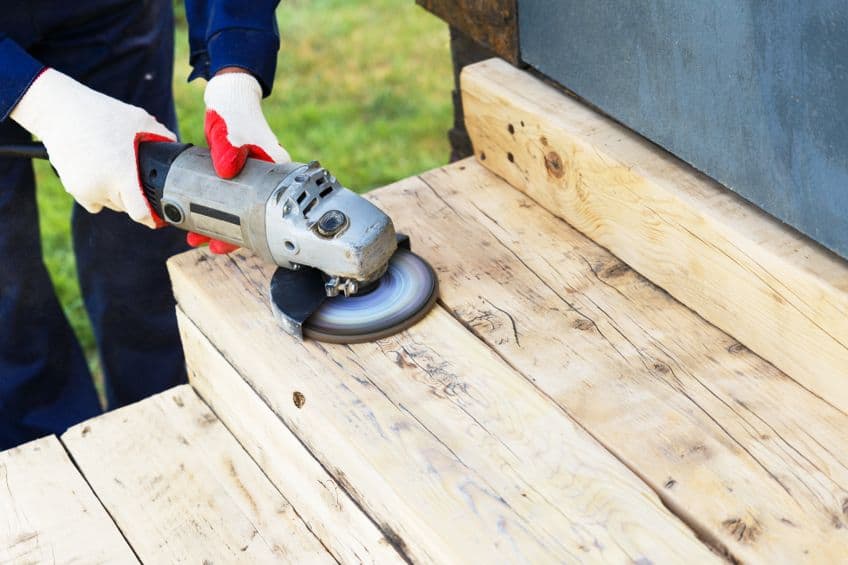
These sanders are extremely powerful and do a great job of removing paint from cars, but it can be a bit pricey to get set up if all you are looking to do is sand down a deck. Additionally, pneumatic tools are notoriously hard to control compared to electronic ones, therefore they aren’t best suited to applications that might require a more sensitive touch.
PROS
- Easy to prepare
- Powerful
- Not too harsh on wood
- Produces less heat
CONS
- Expensive
- Requires a compressor
- Requires air hoses
- Range of motion is limited
Additionally, if you don’t already own an air compressor you will need to purchase, rent, or borrow one which can be a bit of a tall order if you’re only going to be sanding a deck.
Although they might not be the best deck sander overall, if you have an air compressor and don’t mind going over the more sensitive parts of your deck by hand, there isn’t all that much reason not to use one.
Electric Orbital Sander
This type of sander is ideal for deck sanding as they don’t require any existing infrastructure such as air hoses, a compressor, or attachments to be operated. This type of sander is ideal for sanding a deck as you have complete control over the speed of the disk and they come in two varieties. While ordinary orbital sanders work well in most settings, they aren’t the most ideal for sanding down a deck, this being said, we suggest using a random orbital sander as it will reduce any imprint created on the decks surface by the sanding disk, eliminating the need to give it a once over manually once the deck has been sanded completely.
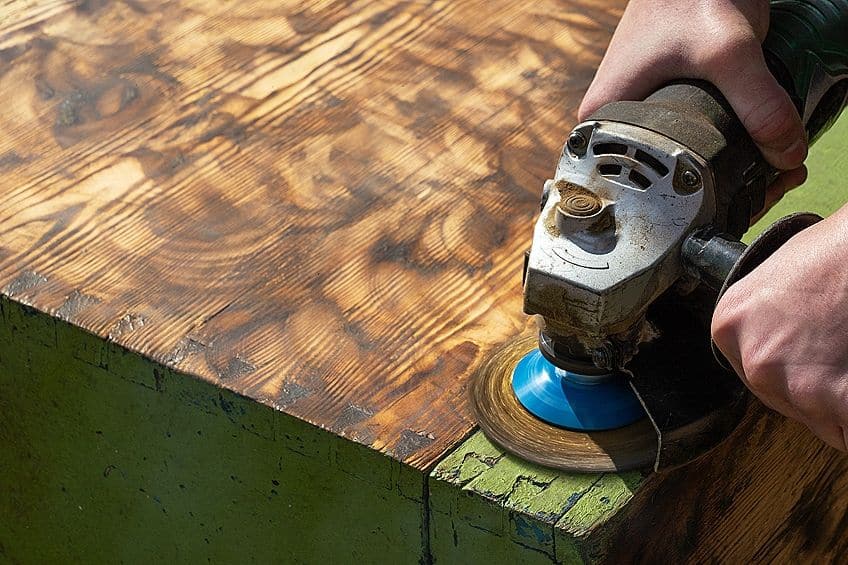
These sanders are a bit more consistent and easier to control than pneumatic sanders, although it should be mentioned that those who are proficient with pneumatic sanders can work wonders if their skill level is up to scratch.
PROS
- Easy to use
- Affordable
- Readily available
- Sands board vertically (with the grain)
CONS
- Difficult to control
- Uses coarse grain sandpaper
- Can sand deeper than intended
- Not specifically designed for deck sanding
Both Pneumatic and electrical sanders typically are manufactured in the three inches to a six-inch range, although we recommend using one most conducive to the width of the board your deck is made out of.
Remember that depending on your experience, skill level, or preference, the choice between a pneumatic and electrical deck sander is entirely up to you as the decision is purely subjective.
Electrical Belt Sander
If using a pneumatic sander is like bringing a gun to a knife fight, then using a belt sander is the equivalent of using a small infantry platoon to mow your lawn. Belt sanders use a strip of sanding paper that reciprocates along the length of the sander, this makes them great for trimming edges, skimming, and generally just tearing up surfaces you no longer want. They are extremely powerful and if you are new to using one you might run into some trouble.
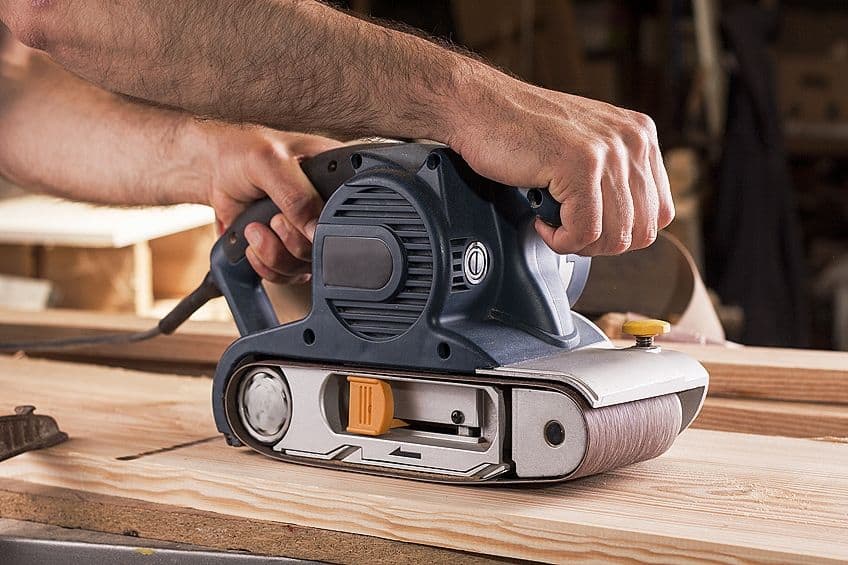
If you need an idea of how tricky they can be to use there are people who have owned these tools for years and still don’t quite have the hang of using them for jobs that require a more pressure-sensitive touch.
PROS
- Easy to use
- Powerful
- Versatile
- Uses existing infrastructure
- Ideal for deck sanding
CONS
- Uses a lot of power
- Can be expensive
- Only certain sizes applicable for decks
- Only sands in a linear manner
This being said, it isn’t impossible to use a belt sander for deck resurfacing, but you will need to be extra careful and use the correct sanding paper for the job, and if your goal is to finish quickly then using a belt sander for deck work might be exactly what you are looking for.
We recommend practicing on some spare boards so you get a good feel for what you will be up against if this is your tool of choice.
What to Consider When Buying a Deck Sander
As you have probably gathered by now there are certain characteristics that make certain deck sanders objectively better than others for a particular purpose. This being said, what should you look for in a deck sander? Here are a few key things you can look for before hitting that purchase button.
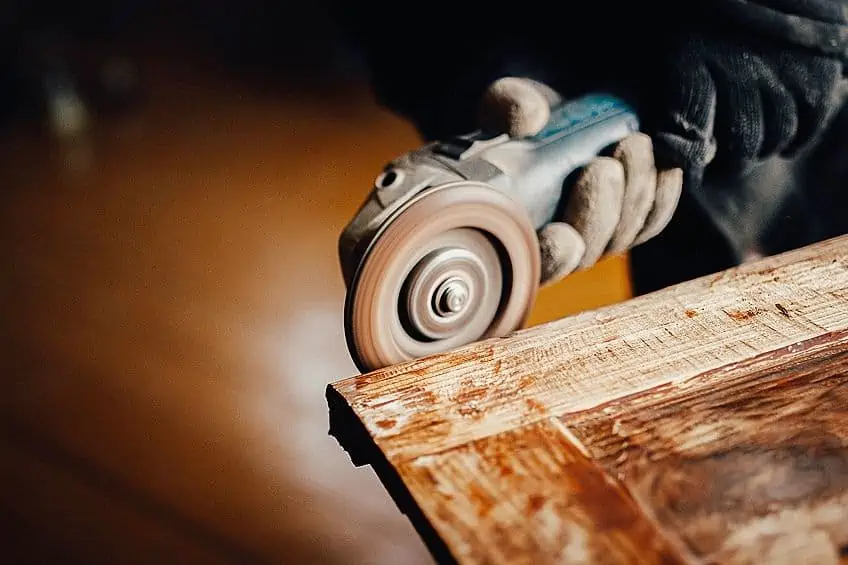
Which Sander Type Is Best?
There are loads of factors which can contribute to this choice. Choosing the right sander for the job is a relatively easy task especially since you will be working with a large surface and likely know what your time scale is. A random orbital sander will ensure that you have a good clean finish without the risk of tearing up chunks of your deck, but the same reason they provide this “finish” (because of the random orbital motion) is the same reason that they can be time-consuming especially when used on larger decks.
Using a belt sander will allow you to get the job done sooner as you’ll essentially be able to sand along the length of each board.
You do, however, also run the risk of damaging parts of your deck that you will need to use wood filler to repair. There is a fair margin of acceptable risk involved regardless of which type of sander you choose, ultimately it comes down to your skill and comfort level, so choose wisely.
What Are You Willing to Pay?
Sanders isn’t what most of us would consider cheap, they’re a powerful tool that most of us would consider being an investment. As with most things these days you get what you pay for, but this doesn’t mean that you shouldn’t get your value for money. This being said, depending on your price range you should have quite a few options available to you in the way of an orbital or belt sander, and which one you choose should be based on what the application will be.
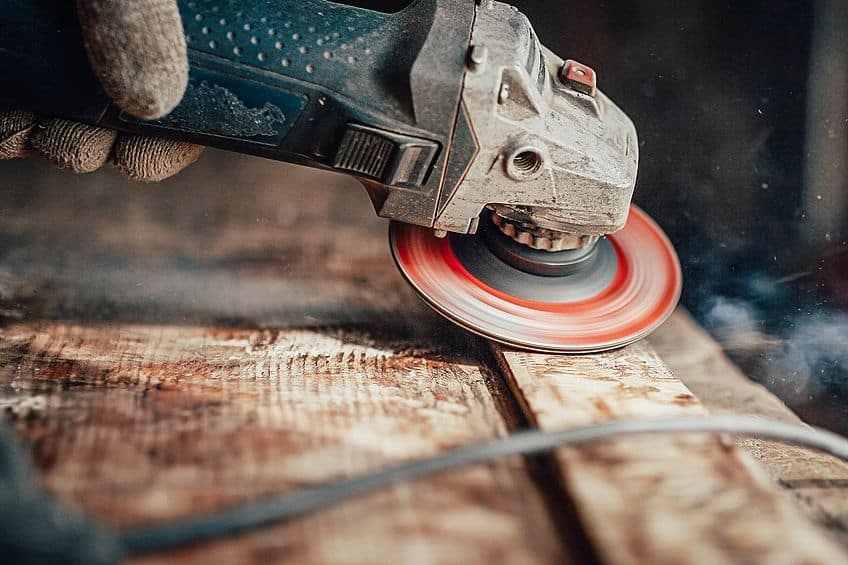
Since you will (likely) be using your sander for deck resurfacing once a year, you should consider the size of your deck and the type of wood it is made out of, next you should consider whether the sander you have selected can be applied for any other projects. After all, if it’s a small deck you don’t need an industrial-grade sander, something light that you will be able to use throughout the rest of the year on smaller jobs should suffice.
However, if you have a larger deck made out of hardwood, for instance, you should consider investing in a belt sander of decent quality. Finally, consider which features are important to you. Do you need a sander that has a dust compartment? Do you prefer an ergonomic grip? Is height more important to you because you have a bad back?
Will you be able to remove and replace pads easily throughout the course of the exercise? Consider these and any other features you might want and factor them into your budget to make the best choice for your application.
Do You Need Variable Speed?
This is entirely dependent on the application. For smaller jobs such as sanding down a regular-sized countertop, this might not be necessary as using finder grit sanding paper to finish off the jib before you apply a coating is possible, however doing the same thing with a full-size deck isn’t realistic in terms of time and effort. On the other hand, if you have a variable unit speed, it will allow you to finish off our deck railings and side skirtings significantly easier as these parts require a light touch compared to the actual deck slats.
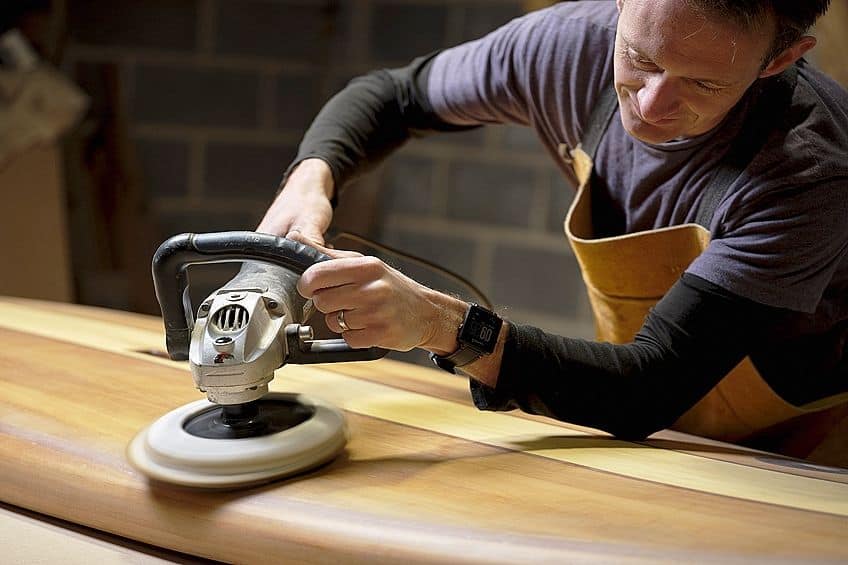
This does not mean that it is impossible to get this done without a variable speed unit, in fact, if you can get the hang of the pressure you are applying to the surface you might not need variable speed at all. This being said, variable speed can be seen as a mechanism to compensate for a skill deficit, making it great for someone who is new to sanding.
Ultimately, you should make this choice based on how confident you are in your ability as well as how much you are willing to spend, as variable speed units typically cost a bit more than single-speed units.
Do You Need Dust Collection?
If you haven’t put it together by now, buying a sander is a bit like choosing the trim level on a car you’d like to buy. Just like you would need to choose between which engine size you would like, or whether you want the model with electric or manual window control, you will need to choose between a sander with variable speed control or a dust collector.
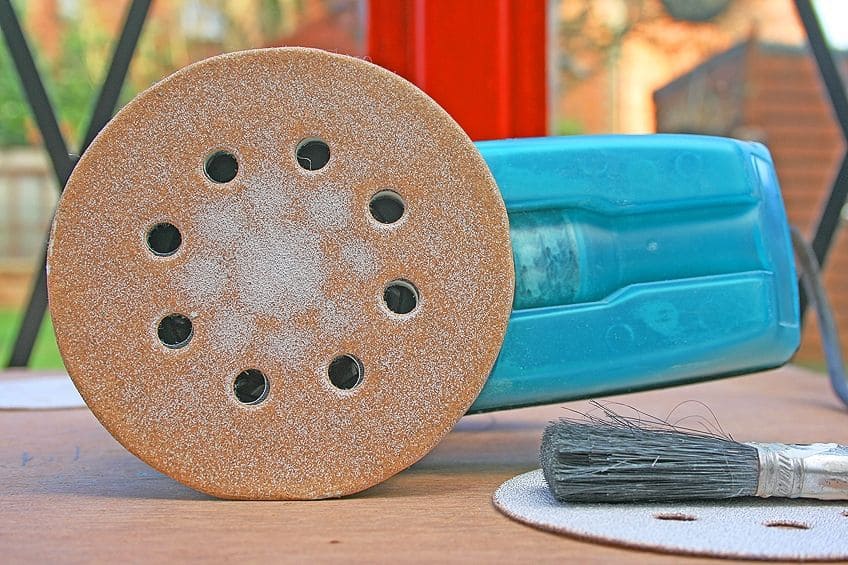
These are all “luxury” aspects of the machine that make your life a bit easier throughout the sanding process. Dust collection is great because not only does it mean less clean up time once the job is done, but it also means that you will be able to give the job 100% of your attention without having to worry about getting hit with sawdust or where said dust is ending up as you work. This being said, just like different trim levels of a car would cost you significantly more than the base model, a sander with a dust compartment/bag will cost you a bit more.
On a more positive note, just as more features on cars like power steering have become “standard” over the years, most sanders these days do come with a dust collection compartment/bag as the expected standard of machinery and technology has evolved.
Do You Need the Unit to Be Quiet?
Let’s face it, nobody wants any of their machinery to be excessively loud. Having a loud machine means that you have to be considerate about those around you such as your family and neighbors while you are working. Fortunately, mass production goods have come a long way since the 1950s and manufacturers now have to follow noise, emission, and energy regulations which is great for the rest of us because appliances now consume less power, are made out of renewable materials, and produce less noise!
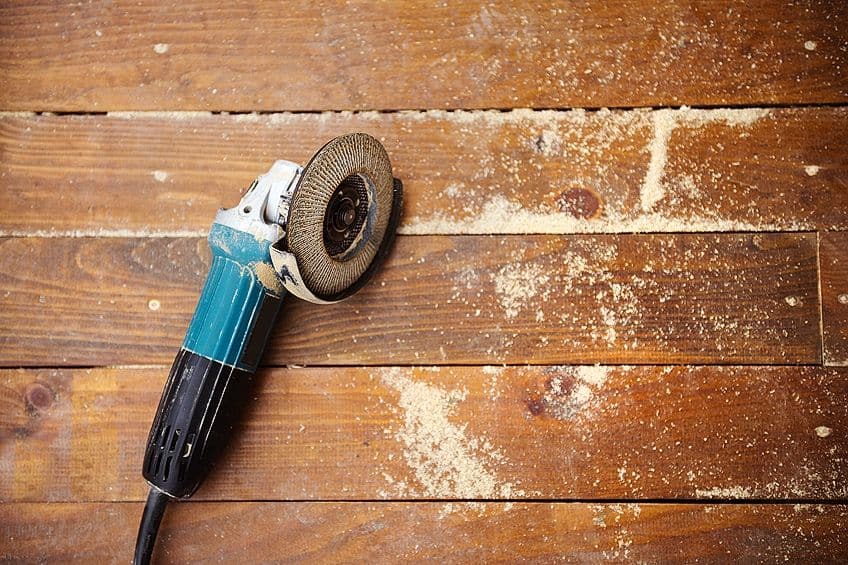
Most sanding units, including the ones we have mentioned previously, are equipped with noise and vibration reduction technology which makes your job significantly easier which means you won’t have to wear earmuffs while you work. Even though these regulations do a lot, machines that have a high RPM range will inherently be much louder, but they are a lot more powerful and therefore more effective in sanding down your deck.
Now that you know the best way to sand a deck, what to look for in a sander for your outdoor deck, which sanders are available for sanding down your deck, and what the pros and cons are for each, it’s time for you to go out and put your newfound knowledge to the test. Remember to take your time, always wear the correct personal protective gear, and choose a unit and technique that works for you.
Frequently Asked Questions
What Is the Best Way to Sand a Deck?
What is the best way to sand a deck? The best technique when sanding the surface of a deck is to sand down each board individually, going down the length of the board and repeating the process until the surface has been resurfaced completely. Ensure that your surface has been cleaned adequately before sanding.
What Grit Sandpaper for Deck Sanding Is Best?
What grit sandpaper for deck sanding is best? While the actual grit counts for sanding a deck, the surface is up for debate; we recommend between 60 and 80 grit sandpaper for the primary surface. Coarse grit is needed to remove the initial finish and once this has been removed you can switch to a finer grit and lower speed setting if you would like a smoother finish.
Is It Worth Sanding a Deck?
Worth is subjective, therefore if you value your deck looking good and being devoid of rot and the inevitable fade brought on by the elements, yes, it is worth it. Decks take on quite a bit of wear and tear over any given season, and a damaged deck can be both an eyesore and a safety hazard, this is why many home improvement experts and independent craftsmen recommend maintaining and resurfacing your deck regularly.

I have been into woodworking since 2005 and woodturning since 2011. Because of my love for wood and woodworking, I started woodhappen.com to teach other enthusiasts about how to finish and seal wood, the best woodworking tools, the different types of wood, and everything else related to woodworking! Read more about me here.

